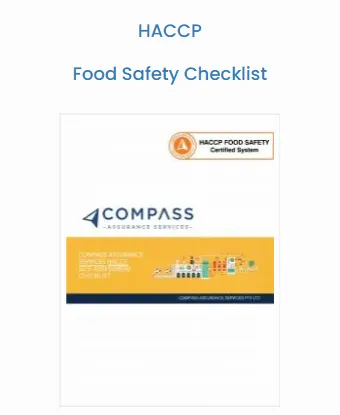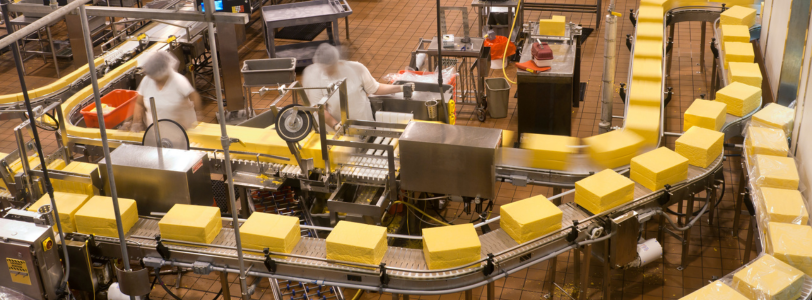In reality, “HACCP vs. SQF” isn’t an accurate title for this article, as the two work together to provide companies with a comprehensive and robust food safety management plan. However, “HACCP & SQF Team Up to Provide an All-Powerful Food Safety Management Plan” just isn’t as catchy, so “HACCP vs. SQF” it is.
SQF
SQF utilises the principles on which HACCP certification is built to manage food safety risks throughout the entire food production process, from the farm to the consumer’s fork. Since SQF builds on HACCP, it is crucial that businesses have already implemented a HACCP management system that identifies potential hazards and outlines control measures to mitigate these risks. However, businesses don’t need HACCP certification to become SQF certified—only the management system is necessary.
SQF certification is structured into three levels:
- Level 1: Basic food safety fundamentals
- Level 2: Certified HACCP food safety plans, meeting GFSI requirements
- Level 3: Comprehensive quality management systems, including additional quality criteria
Obtaining SQF certification offers numerous benefits, including enhanced marketability, increased consumer trust, and higher product standards. The implementation process involves conducting a gap analysis, developing documentation, training staff, performing internal audits, and undergoing a certification audit by an SQFI licensed certification body. SQF is globally recognised and accepted by major retailers and food service providers, making it a valuable certification for businesses looking to expand their market reach and enhance their brand reputation.
HACCP
Initially, HACCP was designed by NASA and Pillsbury in the 1960s to ensure food would remain safe for consumption during space expeditions. Today, it is used by businesses across the globe to effectively manage food safety. HACCP focuses on the critical points in the production process where contamination is most likely to occur. The certification helps businesses identify these critical control points (CCPs) and incorporate appropriate measures to prevent contamination. This is achieved through HACCP’s seven key principles:
- Conduct a hazard analysis
- Identify the critical control points
- Establish critical limits
- Establish monitoring procedures
- Establish corrective actions
- Establish verification procedures
- Documentation and record keeping
Implementing HACCP offers numerous benefits, including reducing the risk of foodborne illnesses, improving product quality, and enhancing consumer trust. HACCP is globally recognised and often required by food safety regulations in various countries, making it essential for businesses operating internationally. It is applied across various sectors within the food industry, such as dairy, meat processing, seafood, and beverages. Moreover, HACCP can serve as a foundation for other food safety and quality management systems, such as BRCGS and SQF. While implementing HACCP can present challenges, such as the need for comprehensive staff training and regular system reviews, the advantages far outweigh the difficulties.
HACCP vs SQF
While HACCP and SQF possess some similarities, there are many differences between the two standards. Mainly, SQF is more in-depth and designed to be more suitable for larger and more complex businesses.
To examine these differences, please see the table below:
| Feature | HACCP | SQF |
| Scope | Critical control points during food production | Food safety, quality control, regulatory compliance throughout the supply chain |
| Methodology | Preventative approach, focusing on identifying all critical control points | Comprehensive management system framework, which incorporates HACCP principals, SQF modules, and continuous improvement |
| Certification | Not a JASANZ accredited certification. | Not a JASANZ accredited certification but is recognised by GFSI |
| Documentation | Requires a food safety management plan/HACCP plan | Extensive documentation required including, HACCP plan, quality control procedures, supplier management programs, and internal audit reports |
| Focus | Identifying and controlling the critical control points of food production | An integrated approach to food safety, quality, regulatory compliance, and supplier management |
| Scalability | Adaptable to business of all sizes working in the food industry | Suitable to larger and more complex businesses operating in the food industry. |
| Benefits | Reduced the risk of biological, chemical, physical, allergen, quality, or regulatory contamination of your products while also enhancing customer confidence | The same benefits as HACCP plus improved quality control, stronger supplier relationships and the market is aware of your rigorous food safety program, enhancing the likelihood of attracting new customers. |
To summarise, think of HACCP as a recipe for food safety, outlining the essential steps to prevent contamination. SQF is like a full cookbook, including HACCP’s recipe but also adding chapters on quality assurance, recipe variations, and oven temperature settings (regulations).
Want to know more about how SQF or HACCP could be integrated into your business? You can call our friendly team on 1300 495 855 or view the checklists our food safety auditors have created.





